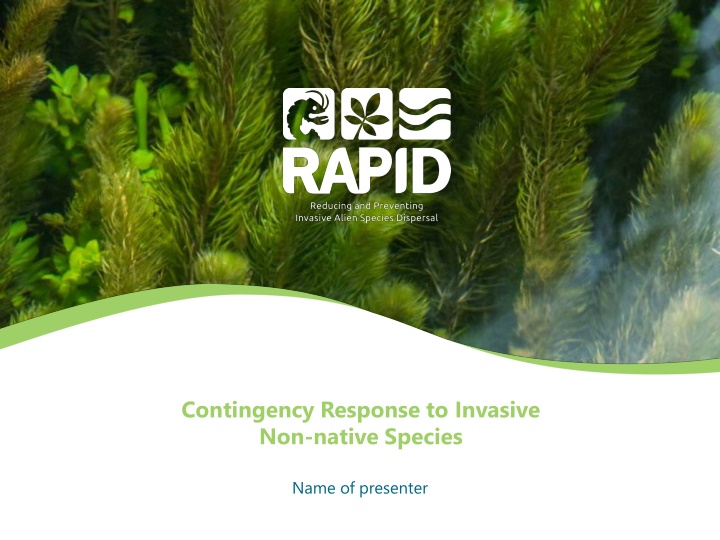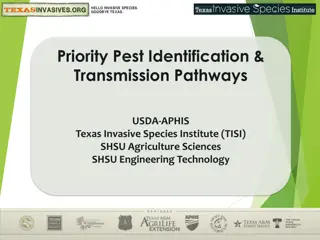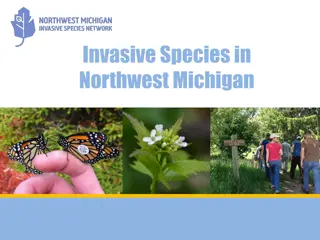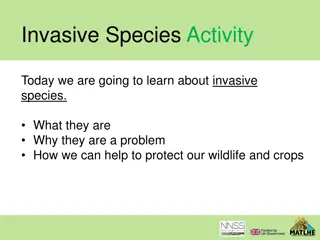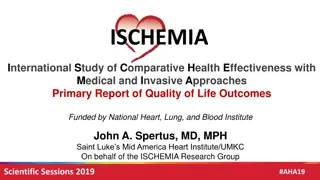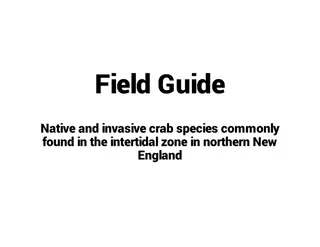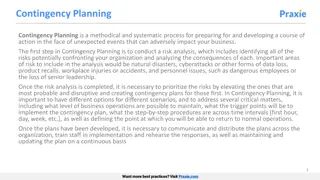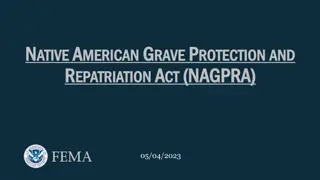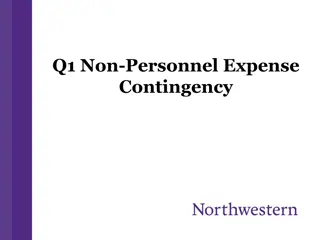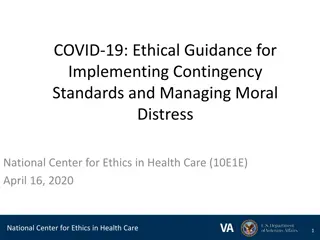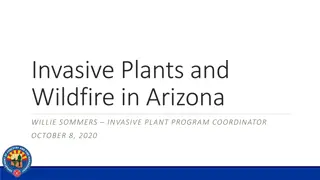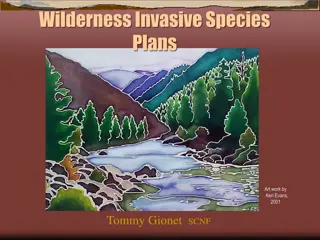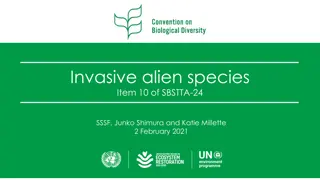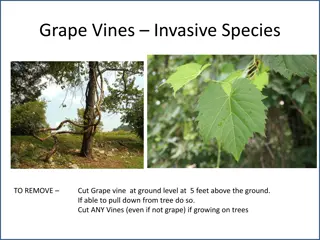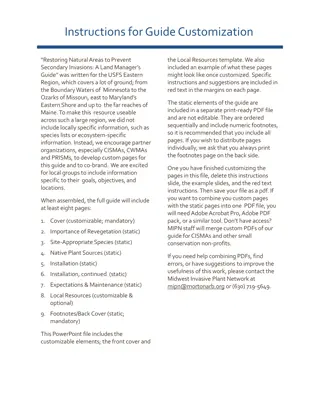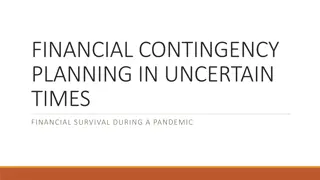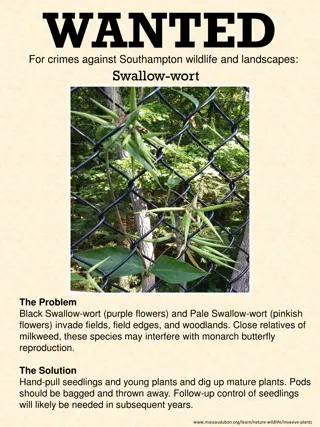Contingency Response to Invasive Non-native Species
Reporting citizen science is crucial for detecting and monitoring invasive non-native species, especially priority species that pose serious threats to native flora, fauna, and economic interests. The process involves confirming sightings, establishing response groups, conducting eradication or containment measures, and implementing biosecurity protocols. Relevant authorities investigate suspected sightings, confirm populations, and coordinate appropriate responses to mitigate the spread of invasive species.
Download Presentation

Please find below an Image/Link to download the presentation.
The content on the website is provided AS IS for your information and personal use only. It may not be sold, licensed, or shared on other websites without obtaining consent from the author.If you encounter any issues during the download, it is possible that the publisher has removed the file from their server.
You are allowed to download the files provided on this website for personal or commercial use, subject to the condition that they are used lawfully. All files are the property of their respective owners.
The content on the website is provided AS IS for your information and personal use only. It may not be sold, licensed, or shared on other websites without obtaining consent from the author.
E N D
Presentation Transcript
Contingency Response to Invasive Non-native Species Name of presenter
Reporting Citizen science is essential for detecting and monitoring invasive non-native species There are a number of different ways to record sightings. iRecord is a great way to record sightings, either online (https://www.brc.ac.uk/irecord/) or by using the iRecord app on your phone. All the methods of recording species can be found at www.nonnativespecies.org/recording
Priority species Some invasive non-native species (INNS) are priority species for contingency response. This is usually because they are considered to be: Highly likely to either become invasive in the UK or continue to spread rapidly if not controlled. A serious threat to native species of flora and fauna. A serious threat to economic interests e.g. aquaculture facilities. Reports of these species will elicit a rapid response from the relevant authorities.
STAGE Suspected sighting RESPONSIBILITIES Responsible authority investigate Responsible authority establish Response Group, who provide recommendations for action Confirmed population Establish extent of population Responsible authority establish Operational Group which implements immediate local biosecurity measures and site assessment with oversight of Response Group Action to eradicate Monitoring to confirm eradication Response Group provides recommendation on whether to attempt eradication or move straight to containment / slowing the spread. Eradication unsuccessful Eradication successful Response Group provides recommendation on whether to stand down, escalate eradication attempt or move to containment / slowing spread. Stand down Escalate Return to pre- invasion footing Contain or slow spread Response Group provides recommendations for and national implementation of biosecurity measures, Operational Group implements local biosecurity
Receiving and confirming a sighting Relevant authorities will determine if an incidental record requires a response. Reports of priority species will be investigated, and a response initiated if a self-sustaining population is detected. Identification issues will be resolved through consultations with experts and organisations as required. Upon confirmation of a population of concern, a response group will be established.
Response on confirmation A Response Group will be established, who will inform senior officials and ministers as necessary and establish the Operational Group. The Operational Group will: Asses the population Initiate immediate biosecurity/containment measures Undertake a biosecurity risk assessment Provide advice on management Undertake surveillance of other areas Liaise with landowners and interested parties Investigate outbreak source There are a number of priorities on which recommendations would be based. The Response Group then determines the course of action.
Rapid eradication If a decision to eradicate is made, the following steps are taken by the each group. Operational Group Produce an eradication strategy Response Group Support the operational group Liaise with landowners and interested parties as necessary Implement the eradication strategy Liaise with national stakeholders Maintain an overview of the eradication strategy Update the response group Monitor the site post-eradication
Containment or Slowing the Spread Based on the biosecurity risk assessment and advice from the Operational Group, the Response Group will make recommendations for containment or slowing the advance of the INNS. Operational Group Response Group Liaise with landowners/local stakeholders Implement additional local biosecurity measures where appropriate Monitor the effectiveness of biosecurity Liaise with national stakeholders Develop and promote national biosecurity measures Consider or take forward regulatory or statutory measures Monitor and review biosecurity measures
